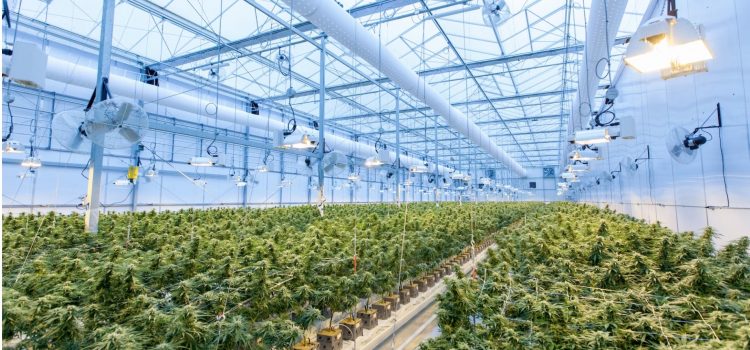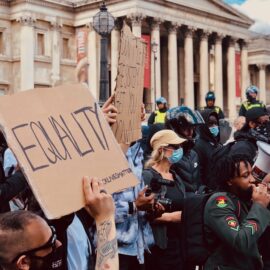
This is a free excerpt from one of Shortform’s Articles. We give you all the important information you need to know about current events and more.
Don't miss out on the whole story. Sign up for a free trial here .
What’s currently happening with U.S. marijuana laws? Is the “War on Drugs” ending? What’s the future of marijuana?
President Biden has just announced pardons for federal marijuana charges, which could mark the beginning of the end of the war on drugs. Additionally, if passed, a new marijuana law reform bill could mean all 50 states will soon embrace some degree of marijuana legalization.
Read on to learn about the new changes to U.S. marijuana laws, including the historical context of the war on drugs.
Biden’s Stance on U.S. Marijuana Laws
With a move that made headlines concerning U.S. marijuana law reform, on October 6, President Biden announced that he would grant pardons to everyone with a federal conviction for “simple” marijuana possession. The pardons will expunge those charges from the records of Americans convicted since marijuana became criminalized in the 1970s, and will apply to charges at the federal level and in Washington, D.C.
Biden tweeted: “Sending people to jail for possessing marijuana has upended too many lives– for conduct that is legal in many states. That’s before you address the clear racial disparities around prosecution and conviction. Today, we begin to right these wrongs.”
This announcement follows an appeal by several of the more liberal Democratic members of the Senate—including senators Elizabeth Warren and Bernie Sanders—urging Biden to take action on this issue. U.S. Senate candidate John Fetterman, of Pennsylvania, said “It’s long past time that we finally decriminalize marijuana.” As the nation prepares for midterm elections in November, this move could bolster support for Democratic candidates.
In this article, we’ll discuss some of the details and criticisms of this policy, its racial implications within the historical context of the “War on Drugs,” and what it might mean for the future of U.S. marijuana laws.
How Many People Will Be Released From Prison?
While the exact number is unclear, records indicate at least 6,500 people will be affected by the pardons at the federal level, with thousands more in Washington, D.C. However, no inmates will be released from prisons under this policy. That’s because the pardons only apply to marijuana possession charges, and not sale and distribution charges—and currently nobody is serving time in U.S. federal prison for simple marijuana possession. This is a charge that’s typically prosecuted at the state level. This is why Biden has urged state governors to follow suit, and pardon those with state convictions as well, which would far outnumber those affected by this federal pardon.
The “War on Drugs” Context
What do U.S. marijuana laws have to do with race and the war on drugs? In her New York Times bestseller The New Jim Crow, Michelle Alexander argues that the war on drugs has created a new racial caste system, disproportionately punishing black people. A powerfully interlocking system of laws and policies targets black people for drug crime, punishes them more severely than white criminals, and makes life as an ex-felon extremely difficult. The result is effectively racial subjugation and disenfranchisement.
The war on drugs and incarceration is the latest instantiation of centuries-old racial discrimination against black people.
It avoids the overt racism of the slavery and Jim Crow methods by using terms like “tough on crime,” but it began in conscious racial motivation.
Starting in the 60s with Barry Goldwater and rising with Nixon, there was deliberate maneuvering by politicians to subtly exploit the vulnerabilities of Southern whites, who were concerned with the Civil Rights campaign.
- Said Nixon’s chief of staff: “you have to face the fact that the whole problem is really the blacks. The key is to devise a system that recognized this while not appearing to.”
Like slavery and Jim Crow before it, the New Jim Crow was instituted by appealing to the vulnerability and racism of lower-class whites, who felt threatened economically and socially by black progress, and who want to ensure they’re never at the bottom of the American social ladder. (Shortform note: protecting social status seems to be a basic human instinct.)
What began with a political agenda rapidly proliferated to many stakeholders, all incentivized to maximize the war on drugs and mass incarceration without being consciously racially biased. This includes:
- Law enforcement, who receive federal grants for drug arrests
- The media, which sensationalizes drug crime for views and has stereotyped black people as mainly responsible for drug crime
- Politicians who appeal to scared constituents and one-up each other on being tough on crime (including Clinton and Obama)
- Private prisons (which account for 8% of inmates)
No stakeholder has necessarily seen the big picture of the institution they supported; they were merely safeguarding their own interests and participating in the zeitgeist.
To be clear, Alexander is not accusing law enforcement and other stakeholders of explicit and conscious racism. Rather, the system has created a public consensus image of criminals as being black males, and people cannot acting along subconscious biases.
TITLE: The New Jim Crow
AUTHOR: Michelle Alexander
TIME: 19
READS: 24.3
IMG_URL: https://www.shortform.com/blog/wp-content/uploads/2020/01/newjimcrow_cover.jpg
BOOK_SUMMARYURL: the-new-jim-crow-summary-michelle-alexander
AMZN_ID: B0067NCQVU
What Are Some Criticisms of This Policy?
The criticisms of this move, largely from Republicans, center on the charge that focusing on U.S. marijuana laws is essentially a “distraction” meant to sway voters toward the Democratic Party in the upcoming midterm elections. Political consultant Kellyanne Conway says the timing of the announcement is a strategy to draw voters’ attention away from other major political concerns, like inflation and immigration issues.
Minnesota Republican Representative Michelle Fischbach says focusing on this issue at a time of greater social and political troubles shows that Democrats are “out of touch” with the concerns of American voters. And Arkansas Senator Tom Cotton posted a tweet saying “In the midst of a crime wave and on the brink of a recession, Joe Biden is giving blanket pardons to drug offenders—many of whom pled down from more serious charges. This is a desperate attempt to distract from failed leadership.” However, a simple possession charge is one that is not complicated by any other connected charges, calling into question Cotton’s assertion that many of these people “pled down.”
Despite criticisms that this move is a distraction from more important issues, others voice concerns that the pardons don’t go far enough. Recent polls show that almost half of registered voters consider legalization of marijuana a “top priority” or an “important priority,” and 68% of Americans believe marijuana should be fully legalized in the U.S. for both medical and recreational use.
The Future of U.S. Marijuana Laws
If public opinion effectively shapes policy in a democratic government, we’ll likely see more major shifts in U.S. marijuana laws in the near future. Pew Research surveys show that two-thirds of Americans now believe marijuana should be legal, and 91% believe it should be legal at least for medicinal use. Just since the early 2000s, the number of Americans who support legalization has doubled.
However, marijuana is still classified as a Schedule I drug, meaning it’s in the most highly prohibited category, along with drugs like heroin and LSD, and ahead of opioids. The Schedule I category is defined as substances that have “no currently accepted medical use and a high potential for abuse.” Since there’s now ample scientific evidence to the contrary for marijuana, and it’s legal for medical use in 38 states, this is likely to change soon. President Biden has said this classification of marijuana “makes no sense.” This schedule reclassification would have to happen for marijuana to become federally legal. But supporters of U.S. marijuana law reform want to go much further than that.
In April of 2022, The House of Representatives passed a marijuana law reform bill called The Marijuana Opportunity Reinvestment and Expungement (MORE) Act. This bill has not yet been passed by the Senate, where Republicans could prevent it from going through.
If passed, this bill would substantially change the landscape of U.S. marijuana law. At the very least, some degree of legalization in all 50 states is starting to look like a real possibility. As of 2022, marijuana is fully legal in 18 states plus Washington, D.C., and legal for medical use in 19 more. And this November, five more states (Arkansas, Maryland, Missouri, North Dakota, and South Dakota) have legalization on the ballot. These marijuana reform laws may also foreshadow the end of the half-century-long war on drugs, as a recent ACLU report showed that 83% of Americans believe the war on drugs has failed, and they feel we need a new direction on drug policy.

Want to fast-track your learning? With Shortform, you’ll gain insights you won't find anywhere else .
Here's what you’ll get when you sign up for Shortform :
- Complicated ideas explained in simple and concise ways
- Smart analysis that connects what you’re reading to other key concepts
- Writing with zero fluff because we know how important your time is






